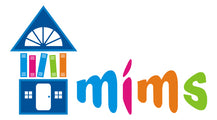





Shipping calculated at checkout
about the book
- by Darcy Pattison
- illustrated by Peter Willis
- 8.5" x 8.5"
- 32 pages
- 4th-5th grade reading level, 840L
NSTA Outstanding Science Trade Book
Nonfiction STEM Picture Book about Sound
See the French language version.
What if your science experiments were so interesting that even an Emperor wanted to know more?
In 1806, scientist Ernst Chladni (KLOD-nee) left Germany for a three-year road trip, entertaining Europeans with his science.
He made wires, columns of air, and solids vibrate. He wrote about this in his native German language, but his French scientist friends wanted to read about it in French. How could he get the cash he needed to write his new book?
In February, 1809, Chladni’s friends took him to the Tuliere Palace. This elementary science picture book dramatizes the exciting meeting between a German scientist and French Emperor Napoleon Bonaparte.
Like Bill Nye, the Science Guy today, Chladni popularized science. But during his work as an entertainer, he struggled to find the time and finances do actual research. This story provides a glimpse at the life of Ernst Chladni, the Father of Acoustics. It’s an amazing example of how scientists collaborate internationally. The story is based on Chladni's own description of the event.
Supports SEL discussions of international friendships.
Who Was Ernst Chladni?
German scientist Ernst Florens Friedrich Chladni (1756-1827) is known as the Father of Acoustics and the Father of Meteoritics. He studied sound transmission through solids, and then traveled to entertain nobility with his science experiments. As he traveled, he collected meteoric rocks and studied them. As this story relates, he entertained in the court of Emperor Napoleon, who then funded his research into acoustics. That's why his iconic work about acoustics, Die Akustik (The Acoustics) was published in French, not his native German.
Important Facts About Ernst Chladni
- Chladni's career was successful because of international cooperation. His scientist friends arranged for the meeting with Napoleon because they wanted his scientific work to continue.
- Chladni received 6000 francs from Napoleon to continue his work in acoustics.
- Chladni invented a musical instrument that vibrates solid glass bars. It was called a clavicylinder. Chladni refused to let Napoleon see the inside of the instrument.
- After the audience with Napoleon, Chladni wrote an article about the evening with Napoleon for the Caecilia, a German music magazine. The article was quoted in an 1888 biography by Franz Melde, Chladni: Life and Times. This story is based on Chladni's own account of his meeting with Napoleon.
MOMENTS IN SCIENCE SERIES - Read More
This eight-book series of nonfiction STEM books highlights biographies of scientists and moments when science changes in some way: a discovery, a new understanding, a new photo, or a Nobel prize award. Scientist's biographies combine with an historical event, and they are wrapped up in clear, concise, and fun explanations of scientific principles. Come and have fun reading an excellent nonfiction picture books.
This series has received a starred review, two NSTA Outstanding Science Trade Books, Junior Library Guild selection, NSSTA Notable Social Studies Book, and the Eureka! NonFiction Honor award (CA Reading Assn.). See the entire MOMENTS IN SCIENCE series here.

